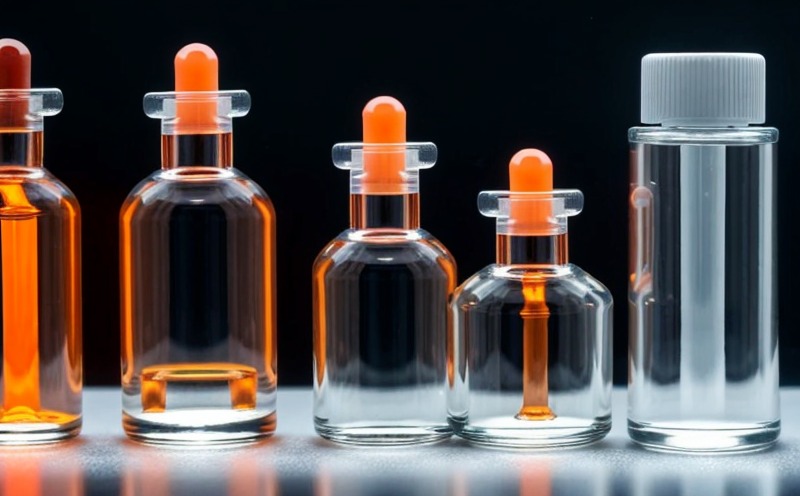DIN EN ISO 10993 23 Irritation Testing of Nanoparticles on Mucosal Surfaces
The DIN EN ISO 10993-23 standard is a crucial component for assessing the irritation potential of nanoparticles when they come into contact with mucosal surfaces. This testing protocol ensures that nanomaterials used in medical devices, pharmaceutical products, and other applications are safe for human use. The standard focuses on determining whether nanomaterials can cause localized or systemic irritation following exposure.
The procedure involves submucosally injecting nanoparticles into the nasal, tracheobronchial, or vaginal mucosa of animals. This approach allows researchers to assess the potential for adverse effects on these sensitive tissues. The testing is highly relevant for nanomaterials that are intended for use in respiratory systems or other mucosal surfaces.
Accurate and reliable testing is essential for ensuring compliance with regulatory requirements and protecting public health. By adhering to this standard, manufacturers can provide evidence of the safety of their products during development stages, before they reach the market. This ensures that potential risks are identified early on in product lifecycle management processes.
The process typically begins by selecting an appropriate animal model based on the intended use of the nanomaterials. Common choices include rats or rabbits due to their physiological similarities with humans regarding mucosal surfaces. Once selected, the animals undergo preparation steps such as fasting overnight prior to testing.
During the actual test procedure, the nanoparticles are prepared according to specific protocols outlined within the standard before being administered via submucosal injection into the chosen site of interest (nasal cavity, tracheobronchial region, or vagina). Careful attention must be paid during preparation and administration to ensure uniform dispersion of particles throughout the injected volume. This helps maintain consistency across multiple samples.
Following exposure, detailed observations are made over specified time intervals up to 28 days post-administration regarding signs indicative of irritation such as inflammation, discharge, or changes in tissue appearance. Quantitative measures may also be taken using histological techniques if necessary for more precise evaluation.
The results from these tests play a key role in determining whether further development is warranted or if modifications are needed to minimize any identified risks associated with the nanomaterials being evaluated. Compliance with this standard provides confidence that regulatory requirements have been met while simultaneously contributing positively towards overall product safety goals.
Applied Standards
The DIN EN ISO 10993-23 irritation testing protocol is part of a broader set of standards designed specifically for assessing the biocompatibility and toxicity characteristics of materials used in medical devices. These include:
- DIN EN ISO 10993-1: Biological evaluation of medical devices—General requirements
- DIN EN ISO 10993-2: System for classification of biological tests and in vitro tests
- DIN EN ISO 10993-5: Microbial colonization potential testing
- DIN EN ISO 10993-6: In vivo systemic toxicity testing
- DIN EN ISO 10993-7: In vitro cytotoxicity testing
- DIN EN ISO 10993-8: Acute systemic toxicity testing
- DIN EN ISO 10993-10: Intracutaneous, subcutaneous and intradermal injection tests for determining generalized irritation potential
- DIN EN ISO 10993-24: Irritation testing of nanoparticles on intact skin
By following these standards, laboratories can ensure consistent and reproducible results across different studies. Additionally, adherence to internationally recognized guidelines enhances the credibility of test data in international markets.
Benefits
- Enhanced Safety: Ensures that nanomaterials are safe for human use by identifying potential risks early on in product development cycles.
- Regulatory Compliance: Provides evidence needed to meet regulatory requirements and avoid costly delays during product approval processes.
- Patient Protection: Helps safeguard patients from exposure to potentially harmful nanomaterials through rigorous testing protocols.
- Research Advancement: Facilitates better understanding of how nanomaterials interact with biological systems, leading to improved formulations and designs.
The benefits extend beyond just safety considerations; they also encompass efficiency gains for manufacturers who can identify problematic materials early on and make necessary adjustments without risking patient health or facing lengthy regulatory scrutiny.
Use Cases and Application Examples
| Application | Description |
|---|---|
| Mucosal Drug Delivery Systems | Evaluating the irritation potential of drug nanoparticles administered directly to mucosal surfaces like the nose or throat. |
| Bioadhesives and Sealants | Assessing whether bioadhesive materials containing nanoparticles could cause localized irritation upon contact with mucous membranes. |
| Medical Implants | Determining if nanocomposite implants might trigger adverse reactions when implanted near sensitive tissues such as the nasal cavity or tracheobronchial region. |
- Mucosal Drug Delivery Systems: In this case, researchers would be interested in ensuring that nanoparticles used to deliver drugs directly into the mucosa do not cause irritation but instead enhance therapeutic efficacy.
- Bioadhesives and Sealants: For these materials, it’s important to know if they will irritate when applied to mucosal surfaces during surgical procedures or wound closure processes.
- Medical Implants: Nanocomposite implants designed for long-term use need thorough evaluation of their biocompatibility with surrounding tissues including potential irritation levels.
These examples illustrate how DIN EN ISO 10993-23 plays a vital role in various aspects of nanotechnology application development ensuring that all products intended for human use meet strict safety standards.





